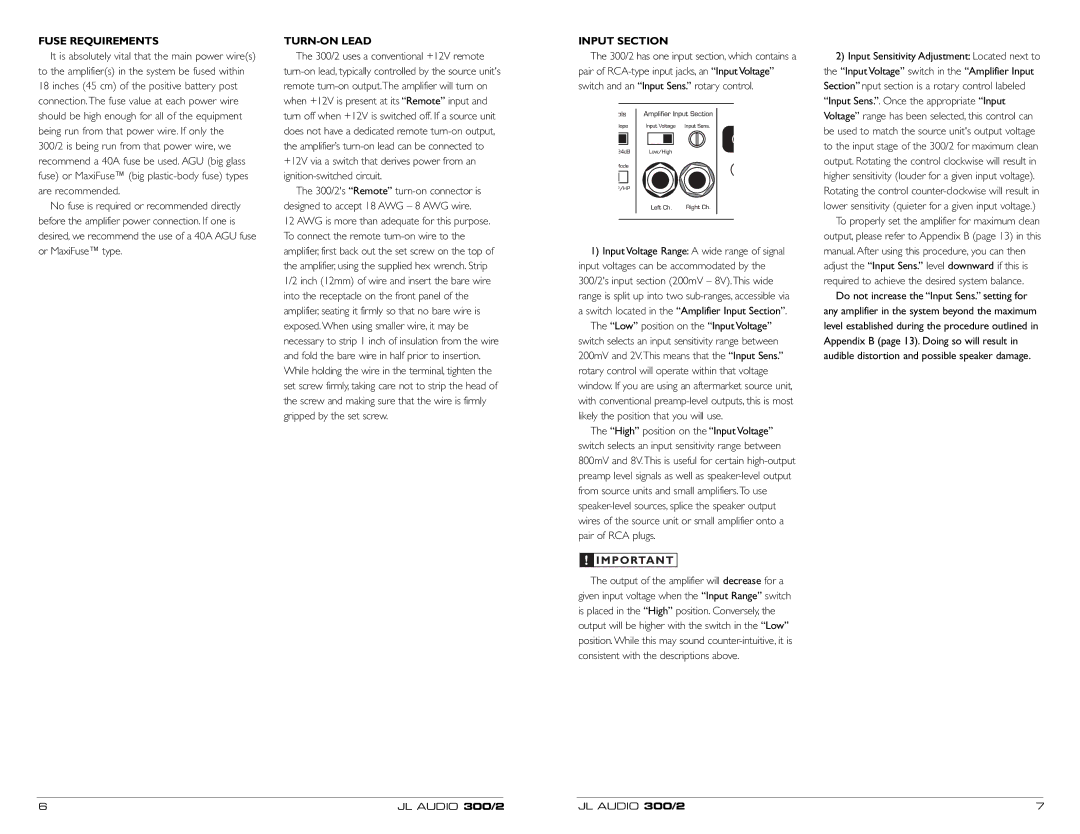300/2 specifications
The JL Audio 300/2 is a premium two-channel amplifier that stands out in the world of automotive audio for its exceptional sound quality and robust performance. Designed with an emphasis on power and fidelity, this amplifier is ideal for enthusiasts looking to enhance their car audio systems.One of the standout features of the JL Audio 300/2 is its impressive power output. Capable of delivering 75 watts per channel at 4 ohms and an elevated 150 watts per channel at 2 ohms, this amplifier ensures that your speakers receive the necessary power to produce clear, dynamic sound. This ample power allows for a significant improvement in overall audio performance, making even the most nuanced musical passages come alive.
The amplifier utilizes advanced Class A/B technology, which combines the efficiency of Class B with the linearity of Class A. This results in minimized distortion and improved thermal performance, allowing the JL Audio 300/2 to run cool even under demanding conditions. Such design yields a rich, warm sound, ideal for both casual listeners and serious audiophiles.
The JL Audio 300/2 is also equipped with a fully adjustable crossover system. This system features high-pass and low-pass filters, which enable users to tailor the audio output to their particular speaker configuration. The built-in frequency adjustment allows for precise tuning, optimizing the amplifier's performance in various listening environments.
Durability and design are also key characteristics of the JL Audio 300/2. The amplifier is housed in a sturdy, yet attractive metal chassis designed to withstand the rigors of automotive use. Its sleek aesthetic and compact design make installation straightforward, fitting seamlessly into a variety of automotive environments.
Moreover, the amplifier features a secure input terminal and robust speaker outputs that allow for reliable connections, reducing the chances of interference or loss of signal quality.
In summary, the JL Audio 300/2 is a high-performance two-channel amplifier that marries powerful output with advanced audio technology. Its Class A/B design, customizable crossover options, and durable construction make it a perfect choice for car audio enthusiasts seeking to elevate their listening experience. Whether powering high-quality component speakers or adding depth to an audio system, the JL Audio 300/2 is engineered to deliver impressive sound fidelity and reliability.

